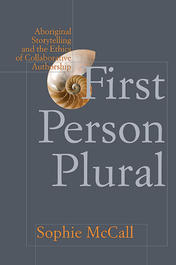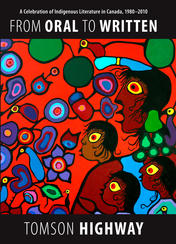Literary Criticism

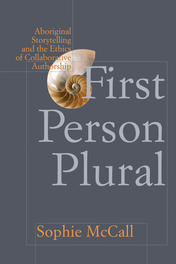
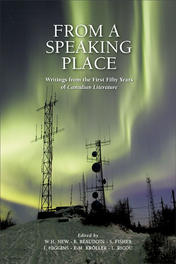
From a Speaking Place
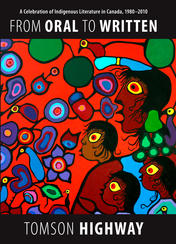
From Oral to Written
From Oral to Written
A Celebration of Native Canadian Literature Published in the 30 Years between 1980 and 2010
by Tomson Highway C
ONTENTS
Prologue
Fiction
Drama
Poetry
Non-fiction
Biography and Autobiography
Young People’s Literature
Epilogue
List of Featured Works and their Authors
“I am an Indian. I am proud to know who I am and where I originated. I am proud to be a unique creation of the Great Spirit. We are part of Mother Earth… We have survived, but survival by itself is not enough. A people must also grow and flourish.” - Chief John Snow, “These Mountains Are Our Sacred Places” (Toronto: Samuel Stevens, 1977).
The leap from oral tradition to written text emerged as a rejection of the way Aboriginal Canadians were portrayed in the literary canon. Aboriginal Canadians read little about our history of domination by newcomer culture in the books we were taught from. What was pounded into our heads, quite on the other hand, was that historians tell the truth, that they swear to a kind of Hippocratic oath that applies to their discipline. There was something fishy here. We were not being told the truth and, deep down inside, we knew it. To set the record straight, just for instance, my father died at age seventy-nine in 1988 as fit as a gymnast and kinder than Jesus; bloated to the size of a walrus, Pope Alexander VI first rotted to his death then burst like a cist. Historical fact. The question here being: which of these two men was the savage? We would be told the truth and, until we were, we would drop out of school and continue wreaking havoc on Canadian society until that society screamed with embarrassment. And drop out we did, in grade nine, ten, eleven. Few ever made it to grade twelve, even fewer to university. I was one of them.
When I entered the University of Manitoba in the fall of 1970 – a first for Brochet -- there was no such thing as Canadian literature. At least there wasn’t in the public mind. If it did exist, few knew about it. Certainly as a body of work, as a national voice, it was unknown. Not like the Americans had with their Melvilles and Faulkners and Hemingways and Dickinsons. Not like the Irish with their Yeatses and Shaws and Joyces and Becketts. And not like the English and the French and the Germans. Margaret Atwood’s seminal assessment of Canadian literature as it existed up to that time changed that. Published in 1972, the book was called “Survival.” I picked it up at third year university (in 1973) in what was one of the first courses in Canadian literature ever to be offered at a university anywhere on Earth, so far as I knew. I was astonished. Here, all of a sudden, were writers such as Susanna Moodie who had written, in Canada, as early as the 1850’s. Sir Charles G.D. Roberts, E.J. Pratt, Frederick Philip Grove, Sinclair Ross, Gabrielle Roy, Al Purdy, Earl Birney, Sheila Watson, Margaret Laurence, James Reaney, Robertson Davies, the names popped out one after the other after the other. I was astonished. Here, finally, were stories that took place in Neepawa, Manitoba, on the prairies of Saskatchewan, in London, Ontario, in Montreal. I was walking, one day, on a stretch of road where a Donnelly (from James Reaney’s famed Donnelly trilogy of plays) had driven a stage coach, I saw the stone angel at the cemetery in Neepawa, I walked one day on Mordecai Richler’s St. Urbain Street in Montreal and, as I did, was floating on magic. And as I studied this material – still struggling with the English language as I was – a voice inside me said: “if they can do it, maybe I can, too, one day, with Brochet, with Reindeer Lake, with the Guy Hill Indian Residential School in The Pas, Manitoba, with Winnipeg.” And one of those writers, poet-playwright James Reaney who taught at London’s University of Western Ontario to which I had transferred for my fourth year (in 1974), gave me the courage. And the encouragement. So I started writing, secretly, timidly, clumsily, but I started. As had other young Native people in other parts of Canada who, like me, had survived impossible geographies and suicidal self-images.
They started telling their own stories about their own people in their own voice from their own perspective. And suddenly, things were happening in Native communities, including – wonder of wonders -- reserves, in Cree, in Ojibway, in Inuktituk. Our people were having love affairs inside books and on stages. They were walking, they were dancing, they were singing, they were arguing, they were getting drunk, they were fighting, playing hockey, playing bingo, baking pies, they were laughing and crying. And, looked at through the warp and weave of languages and linguistic architecture, their ancestral memory went back way beyond the year 1492, to the very dawn of time itself, some might say, for Cree, as it turns out, is older than English, Blackfoot older than French.
If as recently as forty years ago, there was no recognizable body of work by Canadian writers, as recently as thirty years ago*, there was no Native literature in this country. There were, perhaps, five or six books that had made a dent on the national consciousness, so few that one can practically count them on the fingers of one hand: “Halfbreed” by Maria Campbell, “In Search of April Raintree” by Beatrice Culleton, “The Unjust Society” by Harold Cardinal and, before that, of course, the poetry of Pauline Johnson and even Louis Riel. And there were a handful of others much less well-known. But five writers writing a century apart does not a literature or a movement make. Which still does not say that we had no narrative tradition. We did and we do, one that goes back eons. It’s just that, as I say, it was oral, not written. The paintings of Norval Morriseau and the Woodland School certainly opened the door to that vast library. But written on paper? Published? As recently as thirty years ago, there was no such thing as a professional Native writer in this country, “professional” meaning one who makes a living at a profession, in this case, the profession of writing. (*FOOTNOTE: this book was written in the years leading up to and immediately following the year 2010).
Now, thirty years later, there exists an entire community of Native writers that stretches all the way from Cape Breton Island, Nova Scotia to Old Crow, Yukon. Professional, semi-professional, it doesn’t matter, we are here by the dozen if not by the hundred, writing in English, in French, and in Cree, Innu, and other Native languages. Against all odds, this handful of intrepid revolutionaries had learned the English and French languages to the point where they could write their own novels, that most British of narrative forms, their own plays, own books of poetry, own books of non-fiction in the form of biography, autobiography, history, and social and political analysis. The floodgates had opened. The sparks that Riel, Johnson, Cardinal, Campbell, and Culleton had lit had at last burst into flame. And out of that flame came an entire industry, one that employs small armies of workers in the form of publishers, editors, booksellers, teachers, university professors, social workers... Out of that flame came this voice that is now heard not only clean across the country but clean around the world.
Still, in all this excitement, one must not forget that the most important element is this: finally, there is something there for Native children and adolescents going to school to read, to hold their interest. If before 1980, we couldn’t have cared less about what we were reading, now we couldn’t wait to turn that next page and see who was doing what to whom, how many times they were doing it, how hard, why, when, where, and what the results were. Finally, Spot was barking in Cree -- “Eemik’simoot Spot, ‘neeeee,’ kaa-itweet.” (“Barking, Spot said, “neeeee” [“good grief”]). Finally, his master, David, was talking to trees – “taansi igwa keetha, mistik?” (“How are you, you creature of wood?)
If in my part of the world when I was a child, acquiring grade seven was a miracle, to be able to say “I saw you stoling” or “you want some the coffee” an act of magic, that situation has changed dramatically. If thirty years ago, it was rare that Native people finished high school, that situation has changed dramatically. If when I was a teenager it was almost unheard of that a Native person went to university much less finished an undergraduate degree much less a masters, that situation has changed dramatically. When I entered the University of Manitoba in the fall of 1970, just for example, there were only 15 Native students in a student body of some 22,000 white students. And believe me, they were white – all them coloured folks came later, god bless them. When I transferred to the University of Western Ontario in the fall of 1974, same thing – 15 Native students in a student body of 22,000. That’s a ratio of .10%. Today, Native students at university are legion. At Brandon University alone, 800 of the 3,500 students are Native, a ratio of nearly 25%. Lakehead University in Thunder Bay, Laurentian University in Sudbury, Trent University in Peterborough, the University of Manitoba in Winnipeg, they’re all there. Native students are getting B.A.’s and M.A.’s. They are getting Ph.D.’s in English literature. They are getting Ph.D.’s in Canadian literature, Ph.D.’s in Native-Canadian literature, Ph.D.’s in northern Manitoban, Native-Canadian literature. Thirty years ago, not a single university in Canada had a Native Studies programme. Now they all do.
There are, of course, several reasons for this sea-change. There are those, Native and non-native, who say that Native literature was born as a reaction to the threat of 1969’s White Paper, that this was the spark that lit the flame in the aftermath of which followed the politicians, social reformers, social workers, and teachers, some Native, many not. Maybe yes, maybe no. Still, I doubt that they could have done what they did without Native writers. Because for the first time in history, those Native students in those universities have a literature that does not portray them as savages, as cannibals, as losers, as drunks, as perpetual victims. They have a literature that gives them four-dimensional characters and not just cutboard cut-outs that say, “ugh” and “how.”
They have a literature that paints them in colours that are psychologically complex and sophisticated. They have a literature that validates their existence, that gives them dignity, that tells them that they, and their culture, their ideas, their languages, are important if not downright essential to the long-term survival of the planet. And once having finished that schooling, they will go back to their communities – as they are doing already – to enrich them, to empower them, to help heal those that are still so in need of healing that, without it, they will die. And they are doing it so that the next generation of Native people will be a healthier, stronger, more functional people, a people who will contribute in a manner so significant and so positive to the life of their country that they will help transform it into one that is even better than it already is, a country where their people will not be forgotten, will not be locked up in zoo-like, apartheid-inspiring enclosures,* a country that is a true, a visionary leader on the world stage.(*FOOTNOTE: it is documented historical fact that Canada’s Indian Act of 1876 was the inspiration, if not the model itself, on which was built South Africa’s system of apartheid. Go to Johannesburg’s Apartheid Museum and see for yourself.)
“When the whiteman wins, it’s a victory, when the Indians win, it’s a massacre.” “The only good Indian is a dead Indian.” “Indians are a dying race…” “White Canada is in love with the image of the Native as victim.” “’Indian’ is a dirty word…” We’ve read all the rubrics. We’ve heard them all. It’s in the newspapers every day in some form or other, if between the lines. This, for instance, from Metis writer, Olive Dickason’s, “A Concise History of Canada’s First Nations” first published in 2006: “As recently as 1951, when major changes to the Indian Act of 1876 were undertaken, the old idea that Amerindians were human in form only and could not reason may have gone underground, and perhaps even taken on new forms, but its essence was alive and well.” As a Native citizen of this country, this information hits you over the head like a sledgehammer day in and day out. And it is particularly infuriating because most of it is simply not true. Contrary to what non-native writers like “Wacousta’s” John Richardson would have the world believe, we don’t eat human flesh. We never have.
To cite another instance, and this from firsthand experience: regular as clockwork, when someone finds out that I am a successful Indian – waiters, shopgirls, real estate agents, strangers waiting for planes at airports, even Indians themselves -- they get upset; there’s something wrong there; that is not supposed to be. When a taxi-driver drives me up to my house – which to me is a mansion – in leafy, middle-class, suburban Gatineau, Quebec from the Ottawa airport after a flight from Rio de Janeiro and I tell him that this “mansion” with its six-foot Steinway concert grand piano (which I play like a dream) is only one of my residences, that the other one is a cottage in northern Ontario, a third a penthouse in Rome, the fourth an apartment in Rio de Janeiro, Brazil – yes, right there on Copacabana Beach – his eyes bug over. His eyes bug over because he himself, a whiteman, can barely afford one tiny apartment beside a parking lot in downtown Ottawa. So good news, folks. We’re successful. And you ain’t seen nothing yet.
This is a study of Native literature published in Canada in the thirty years between 1980 and 2010 with, as I say, an “overture” featuring the handful of books that first sparked the flame, as I call it). It addresses, first and foremost, the victimhood that the forces of colonization have reduced us to as a people. Then it addresses the rage that rises from that victimhood. Then it addresses the overcoming of that victimhood and that rage. And it touches here and there on the greatest challenge that we have as writers, which is not to be able to write in our own Native languages, which is to have to write in the language of the colonizer, which is to be forced to write in French and in English, two languages that simply cannot capture the insane magic of our mythology, the wild insanity of our Trickster thinking. For the entries in French, I have simply written the chapters in English. And to beef up on their quantity – for there hasn’t been, as yet, that much written by Indians in that language – this is where I’ve included the bulk of the writing “for young people.”
In so doing, in any case, this book asks the questions: what happened here? Why that period? Why that voice, that culture, that literature? What are the causes? What is it saying, what its point, its objective? Where is it going? What has it accomplished? Has it made a difference in Canadian society, in Canadian thinking, in the life of Canada? If so, what? In what way, what form? Beyond that, has it made a change to the way the world thinks of itself and of its inhabitants, its land, its environment?
This is our story, our written tradition, being written, as we speak – in Innu, in Cree, in French, and in English -- by a brave, committed, hard-working, and inspired community of exceptional individuals, our current generation of visionaries, our cultural warriors, our writers, our women most visible among therm… from the Haida of Haida Gwaii (B.C.’s former Queen Charlotte Islands) to the Mi’kmaq of Nova Scotia’s Cape Breton Island to the Ojibway of central Ontario to the Innu of northshore Quebec to the Loucheux of Old Crow, Yukon to the Mohawks of southern Ontario to the Shuswap of south interior British Columbia to the Cree of central Saskatchewan to the Inuit of Nunavut to the Metis of Alberta to the Dogrib of the Northwest Territories and even – surprise, surprise – the Beothuks of Newfoundland…they are the cream of our crop, our most gifted people, our heroes…


